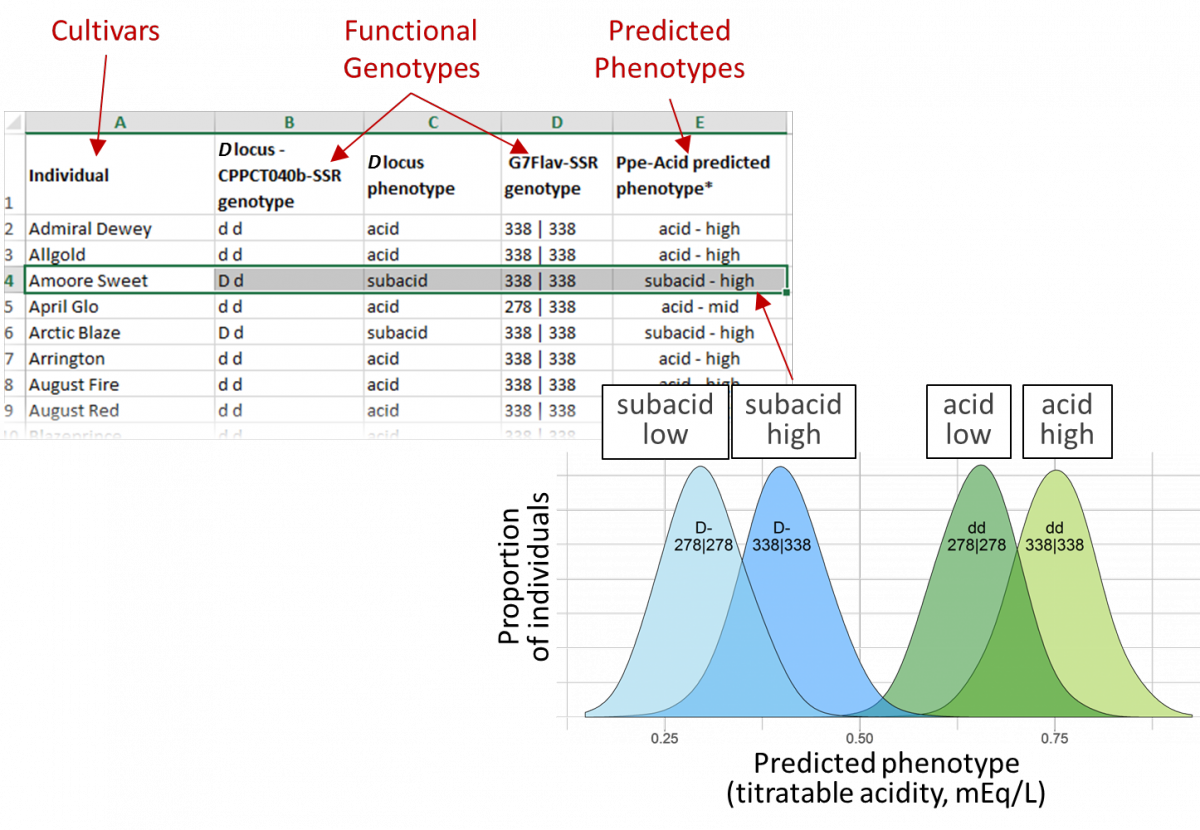Julia Piaskowski, DNA-Informed Breeding Team member, WSU and Cameron Peace, DNA-Informed Breeding Team Leader, WSU
Functional genotype lists are an important part of the RosBREED project to develop DNA tests. This knowledge resource consists of tables of DNA test outcomes and their predicted phenotypes for tens to hundreds of publicly available individuals (cultivars, ancestors, and germplasm collection accessions) targeted by RosBREED (Figure 1). These lists were first provided in the first RosBREED project with some of the earliest DNA tests compiled for peach, apple, and cherry (apple example: ACS1 and ACO1). A sampling of these functional genotype lists is also included in each DNA test card (see March 2016 Community Breeeders Page article: https://www.rosbreed.org/node/912).
Functional genotype lists help breeders in several ways. The DNA information they contain are the basis for marker-assisted parent selection. Once the genotypes and predicted phenotypes of a parental pool is known, this information can be used to great benefit: making crosses to generate novel and promising allele combinations, stacking useful alleles, and greater understanding of the allelic diversity of a breeding program’s germplasm. If a breeding program uses any of the germplasm included on these lists, this resource has direct applicability. If a program’s germplasm is related to individuals in the RosBREED functional genotype lists, knowing the functional genotypes of related germplasm can help breeders understand their own material better. Nevertheless, we recommend breeders test new material before making any conclusions regarding the allelic state of any particular individual at a locus.
We recommend that your program begin crafting functional genotype lists for your own germplasm. We intend the RosBREED lists to be a helpful launching point for Rosaceae breeders. We recognize that breeders are likely to use a broader array of germplasm for crossing, including proprietary germplasm unique to each program. A good starting point is to obtain functional genotypes for parents used frequently in crosses. As always, a DNA test must be validated in a breeding program by comparing predicted phenotypes with historical records of actual performance for some representative individuals. Continuing to update a functional genotype list as new parents are incorporated into a breeding program is recommended.
At this time, RosBREED has uploaded functional genotype lists for all the peach and strawberry DNA tests available, as well as cherry fruit size, cherry self-incompatibility, and apple storability. In the next six months, look for functional genotypes from the apple DNA tests of fruit acidity, bitter pit susceptibility, fruit sweetness/fructose content, scab incidence, fruit flesh color, fruit crispness, and fruit firmness, and from cherry DNA tests of fruit firmness, fruit flesh color and skin color, powdery mildew response, and harvest timing.

